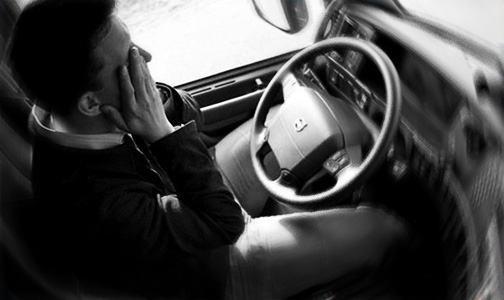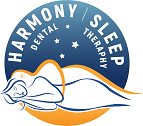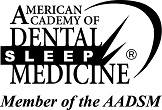Commercial drivers in the US have a much higher rate of obstructive sleep apnea (OSA) than other drivers. This has led to a change in the legal and medical atmosphere surrounding tired drivers and Department of Transportation (DOT) medical examinations. On the DOT health history, each driver is asked if there is a history of sleep disorders, pauses in breathing while asleep, daytime sleepiness or loud snoring. Yes answers may require a driver to be tested for OSA, and to obtain treatment.

A recent legal case brought criminal charges against a truck driver who killed a member of a road crew in Kansas. Even though he had not logged excessive hours prior to the accident, nor been up late the night before and blood samples verified that he had no alcohol or drugs in his body at the time of the accident; he was still found guilty of involuntary manslaughter, a felony conviction.
The driver admitted to being drowsy during the day and continued to drive. He said that he thought that daytime drowsiness was normal. He was diagnosed with obstructive sleep apnea three months after the accident.
Employers are aware that treatment of obstructive sleep apnea creates a 73 percent reduction in preventable driving accidents among drivers diagnosed with OSA. This translates to savings in time and money for both the driver and the employer, as well as reduced risk of deleterious health conditions that could lead to down time and increased medical insurance claims. Oral devices are acceptable treatment for OSA.
In the DOT Medical Examination, Natalie Hartenbaum, MD, MPH, gives a description of when oral devices are acceptable treatment: 1. Oral appliances should only be used as a primary therapy if the initial AHI is less than 30. 2. Prior to returning to service, the driver must have a follow-up sleep study demonstrating ideally AHI of 5, but up to 10 is acceptable. 3. All reported symptoms of sleepiness must be resolved and blood pressure must be controlled.
Oral devices, in unselected patients, return 52 percent to an AHI under 10. With further titration of the oral device during the follow-up sleep study, the success rate for patients vastly increases. Throat surgery is much less effective. Weight loss requires a 20% weight loss to drop your AHI by half. When using CPAP, 90 percent of OSA sufferers return to normal breathing, but mid- to long-term compliance with CPAP therapy falls below 50 percent. For this reason, oral appliances are considered a primary option for cases on non-compliance with CPAP therapy, and may also be seen as a primary option for mild to moderate cases of OSA.
Oral appliances may provide additional benefits for for the over-the-road drivers, as they are compact and do not require electrical power—factors that many drivers must contend with while driving.
• • •
|
|
| ``` PHYSICIAN REFERRAL FORM |
| SLEEP APNEA SELF TEST |
| SLEEP JOURNAL |
|
MARIA SOKOLINA D.D.S. 1066 Clifton Ave. Clifton, NJ 07013-3616 315 W57th Str, Ste 209, NYC, NY 10019 (973) 777-2731 (212) 960-8919 |
|
OFFICE HOURS: Mon: 8:00am - 5:00pm | Tue: 8:00am - 7:00pm Wed: 8:00am - 4:00pm | Thu: 8:00am -7:00pm Fri: 8:00am - 3:00pm | Sat: 8:00am - 2:00pm |







CONNECT WITH US

